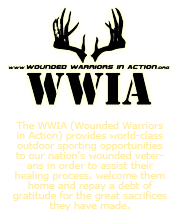Outdoor Report: Fall Fishing, Holiday Pheasants And Prescribed Burns
The leaves have turned and fall is here. But it's not too late to get in some fishing for the year. Wisconsin's unique combination of lakes, streams and rivers, easy fishing access, opportunities for action and the potential for large fish, make it one of the top fishing destinations in the nation. Share the water, take someone fishing and make memories one fish at a time.
A big THANK YOU to the 1.3 million anglers who have already purchased a license this year. You can still purchase a license and explore Wisconsin's waters. 2021-2022 fishing licenses are valid through March 31, 2022, so there are plenty of adventures left to have.
Why Do We Have Regulations?
Through surveys and measuring a lot of fish, DNR fisheries biologists develop and recommend regulations that help protect, preserve and improve Wisconsin fish populations given the current fishing pressure.
Our current fishing regulations make sure Wisconsin anglers have good fishing opportunities both now and in the future.
Here’s why we have fishing regulations:
- To maintain the number and sizes of fish
- To consider anglers’ desires and expectations (like more fish for dinner or larger fish to catch and release)
- To make access to fishing as fair as possible
In Wisconsin, there's always something to fish somewhere, 365 days a year. There are limited open seasons for certain species and waters. Before you head out, check the season dates for your favorite species and favorite waters.
DNR Pheasant Stocking Increases Hunting Opportunities This Holiday SeasonInterested in getting out for some pheasant hunting this year? The DNR will stock pheasant at 25 state properties in central and southern Wisconsin during the week of Dec. 20, 2021, to increase hunting opportunities throughout the holiday season. The pheasant holiday stocking began in 2017 to provide pheasant hunters an additional opportunity to hunt during the holiday season. Five state properties were initially stocked in 2017 with another three added in 2018. Pheasants are one of the most sought-after gamebirds in North America. Due to continued interest and popularity among Wisconsin pheasant hunters, the department will stock 2,920 pheasants across 25 state properties over a two-day period during the week of Dec. 20. Pheasant season in Wisconsin runs until Jan. 9, 2022. Quality pheasant hunting opportunities exist throughout Wisconsin, including wild pheasant hunting where suitable habitat exists and previously stocked public lands. All hunting regulations and bag limits apply through the season’s end. Learn more and find a full list of participating properties here.
|
Fall Burn Season Is HereDNR staff are conducting fall prescribed burns around the state to maintain or restore fire-dependent vegetation communities such as prairie, wetlands and oak woodlands. The main focus of these efforts are on areas where wildlife and rare species habitat has become degraded or is being restored. Fall prescribed burns assist in promoting native grasses and wildflowers, regenerating oak species and providing quality habitat for grassland birds and other species to raise their young next spring. Recently burned areas also attract game species such as turkey and deer, who benefit from increased seed and insect visibility as well as micronutrients foraged from the ash. Research Shows Benefits From Growing Season Prescribed BurnsAn increasing number of studies across the upper Midwest including research conducted by DNR Research Scientist, Jed Meunier, suggests that spring may not be the most effective time to conduct prescribed burns to achieve brush control. In fact, some data show spring burning can cause up to a two-fold increase in re-sprouts on some of the woody plants targeted for control. The DNR would like to continue conducting prescribed burns during the growing season for the following reasons:
To determine if a summer prescribed burn is the right tool for the time frame, DNR field ecologists, forestry and wildlife management staff will identify a site’s known plant and animal species, especially rare species, to understand how a summer burn might impact them based on established avoidance dates or state/national guidelines. They will also assess potential issues related to smoke production from the fire during that time of year. To view planned, current and past prescribed burns visit the DNR’s Prescribed Fire Dashboard. |











